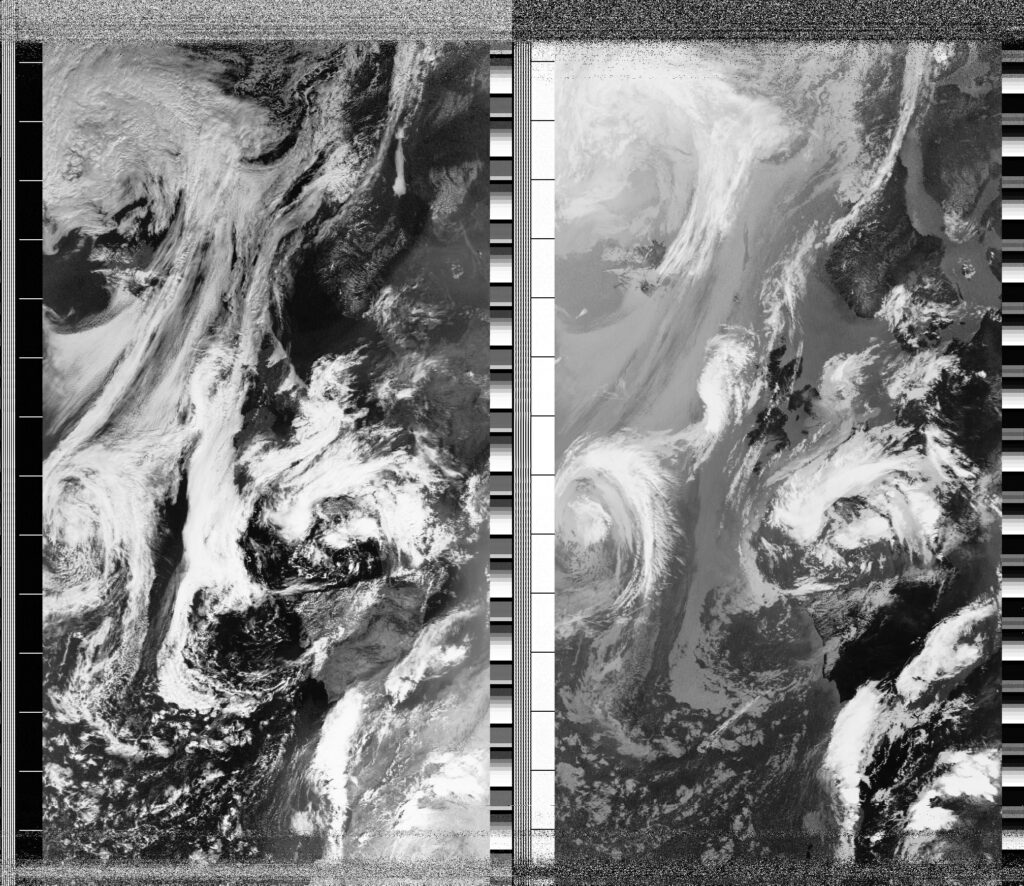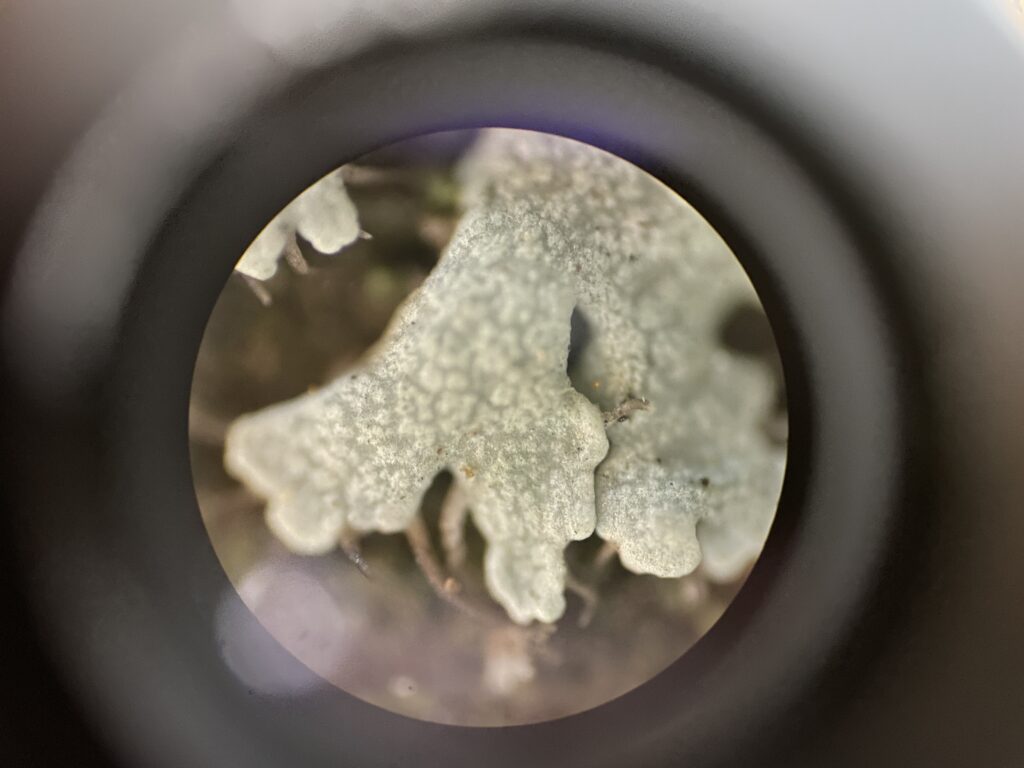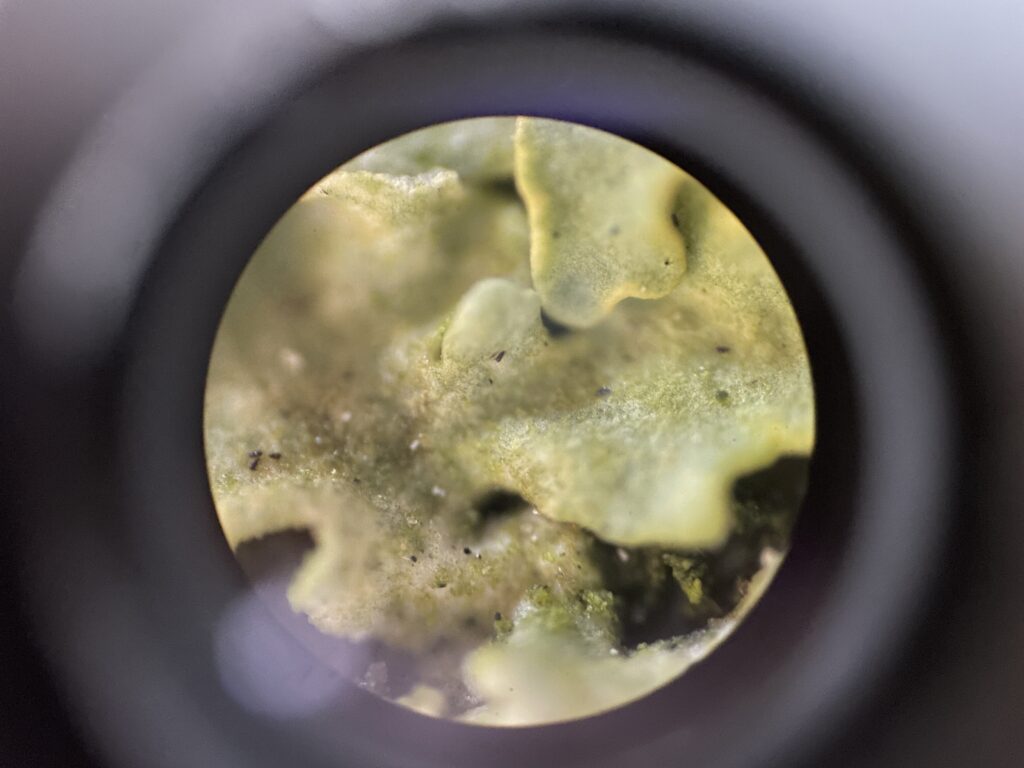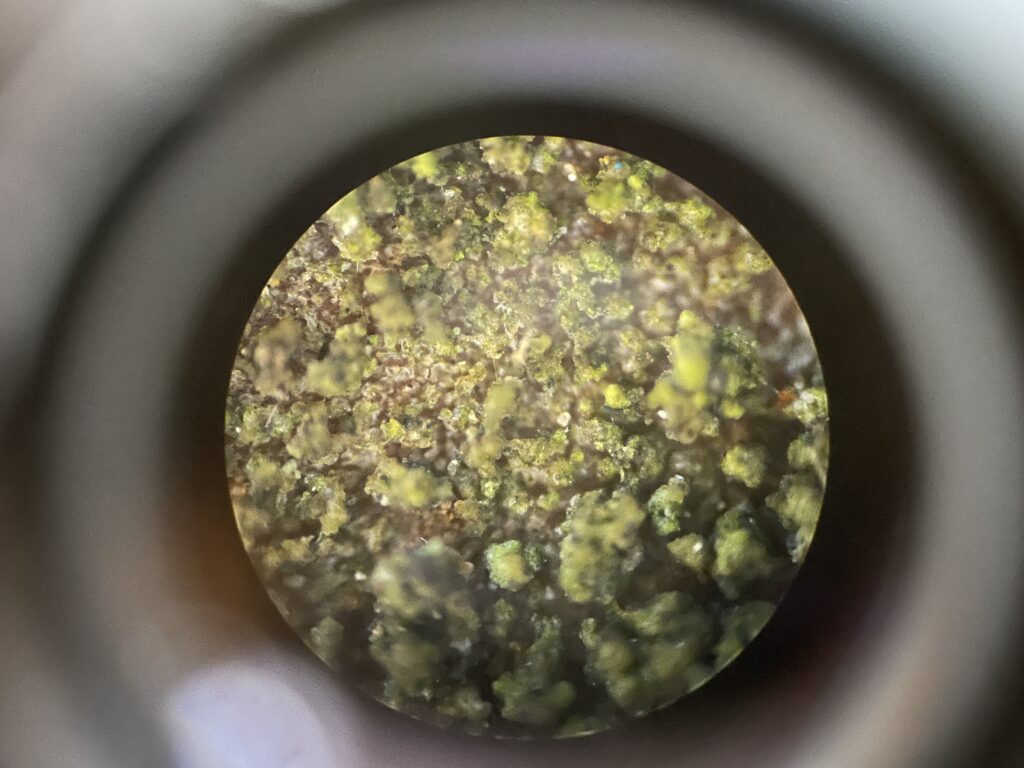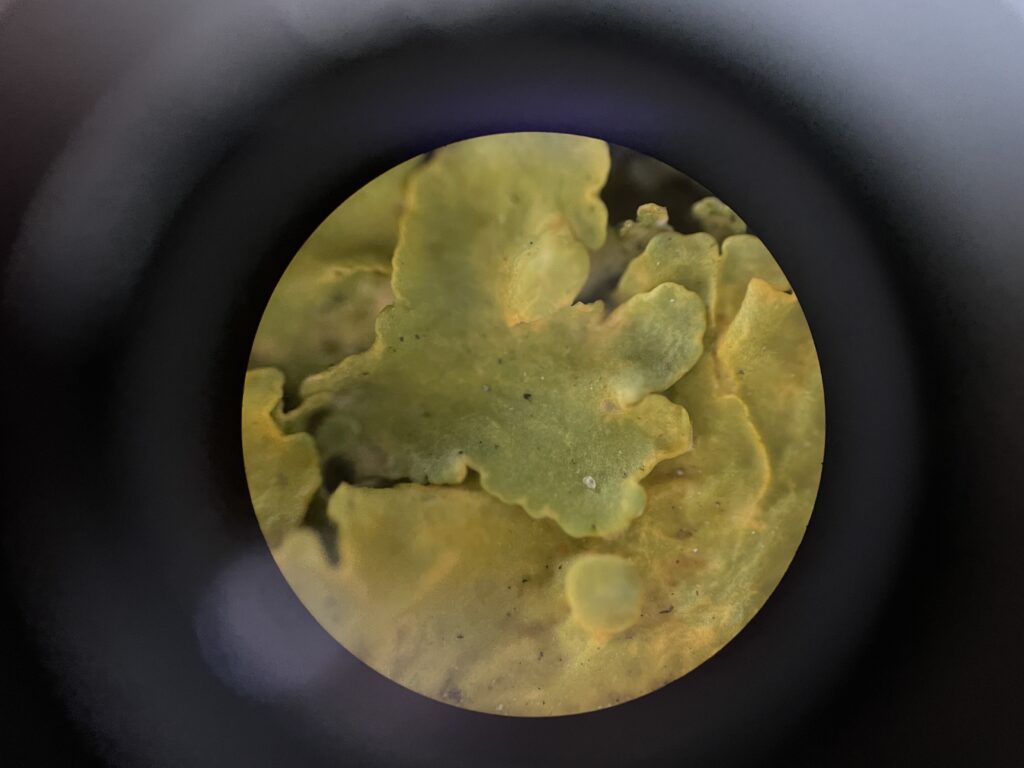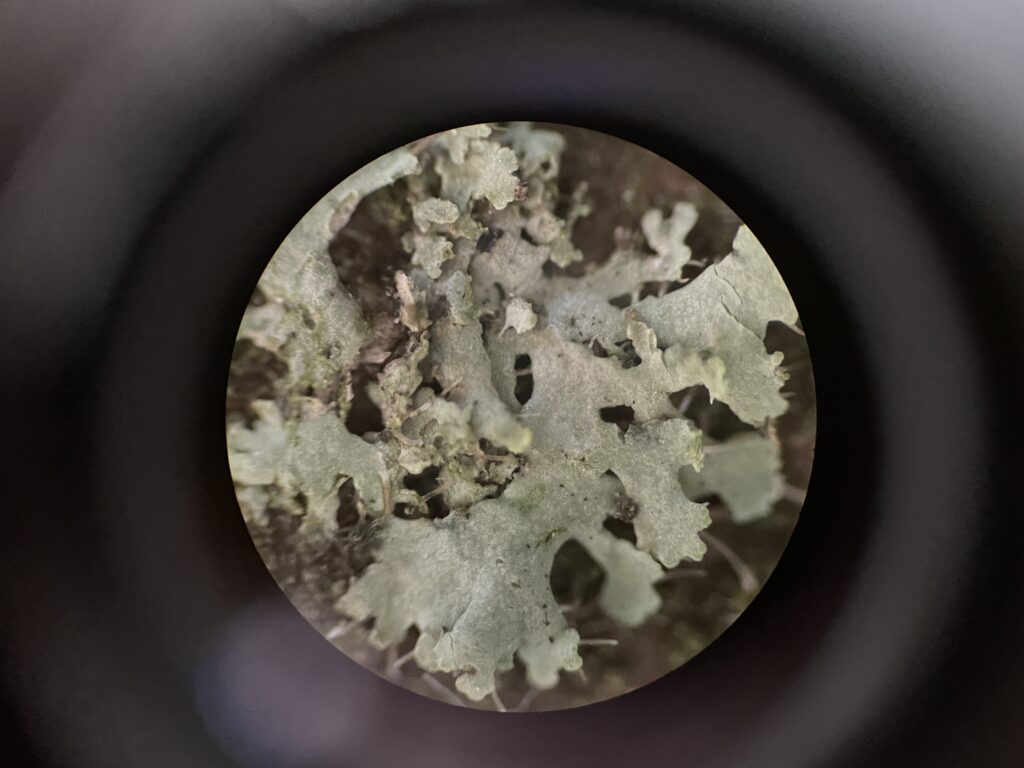Local Date
7 September 2024Local Time
12:51Location
Hackney Downs, LondonCountry or Territory
United KingdomContributor
Sasha EngelmannSatellite
NOAA-18Radio Callsign
Archive ID
Coordinates
Hello lichen, who and when are you? This morning over breakfast I read a post by my friend Adriana Knouf about project Obxeno which is an automomous, solar-powered apparatus and camera watching lichens in a park around the clock. Though lichens are famously slow growers (some only grow around 1mm / year) one of Obxeno's timelapse videos seems to show a rapid grown of a lichen leaf or thallus, sort of blossoming out of the larger body. A curved piece of bark glowed bright yellow and green on the pavement on my way back from the farmers market. Later in Hackney Downs, I saw many smaller fragments of lichen in the grass, and I couldn't help borrowing two small pieces to put under the microscope at home. As I wandered through the labyrinths, caves, colours and depths of the lichens I brought home, I learned they were, like many lichens, collaborations between a green algae and a fungus. For the (at least) two lichens I was looking at, the lichen-forming fungi were Physciaceae and Teloschistaceae, both apparently relatively common and 'cosmopolitan' according to what I could find online. I read these samples in my living room were 'micro-lichen' and their shapes were foliose (leafy) and leprose (like a powder dusting). Lichens are believed to be some of the oldest organisms on earth (though how to define the limits of their identity as 'singular' organism challenges many of Science's principles). They can grow on almost any surface and they can even live inside solid rock, growing between the grains! The collaboration between the algae and the fungi is beneficial because the algae produce carbohydrates via photosynthesis that are used by the fungi, and the fungi provides a protective environment while also gathering moisture and nutrients. When fungi form partnerships with cyanobacteria in certain species of lichen, the cyanobacteria can even fix Nitrogen from the air. I learned that lichens were sent to the vaccum of space by the European Space Agency and exposed for fifteen days to the vacuum, with its widely fluctuating temperatures and cosmic radiation. After 15 days, the lichens were brought back to earth and were found to be unchanged in their ability to photosynthesize. If a lichen can live without water, and even without air; if it is never only 'one' but 'more than one'; if a lichen may be ancient or renewed each day, then perhaps, from the perspective of a lichen, energy, space and time are things that can be bent, molded, malleable. People like Adriana have said this to me before, but I am finally understanding lichens as both space and time-travellers...
